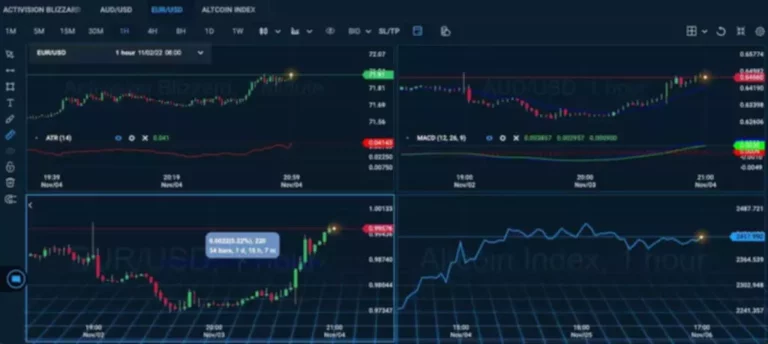The formula for calculating the average daily buying and selling quantity of a stock could be very easy. You simply take the whole buying and selling volume for each day over the span of time that you just want to compute the common volume for and divide that total by the number of buying and selling days in that point span. Average daily buying and selling volume is the common of how many shares (stock market) or contracts (futures and choices market) change arms in a day. Open interest is a futures and choices term that describes how many contracts are open, that haven’t but been closed.
GE inventory reaches a price of about $84.71, which is fifty seven.44% higher than the typical closing prices at Points 1 and a pair of. The inventory dealer has more than 50% in unrealized gains from the preliminary positions. The dealer is constrained by a limit that permits buying and selling only up to 10% of the worth of shares traded in any stock. The maximum allocation for GE for this hedge fund is $5 million, while the minimal allocation for GE is $250,000.
What Is A Good Average Quantity In Stocks?
For occasion, to calculate the ADTV for a stock over a 30-day period, sum up the buying and selling volumes for each of the 30 days and divide the whole by 30. This yields the typical quantity of shares traded per day over the required timeframe. When a stock’s worth is falling, you need its every day volume to be less than the average daily volume—to sign that the promoting strain goes down. When a stock price has consolidated and isn’t rising much, you need to see rising quantity as the value starts to increase to signal more patrons entering the market. When the stock price is rising, you need growing quantity to signal that it is going to keep going. Average volume, or the ADTV (average every day trading volume), in shares refers to the average number of shares that are traded in a day.

Now that the quantity has stabilized you can wait for the worth to consolidate and volume to start out shifting up with buying stress (if you think the stock is a buy). Fluctuation above and beneath the zero line can be utilized to help different buying and selling alerts. The Klinger oscillator sums the buildup (buying) and distribution (selling) volumes for a given time interval. After a protracted price move higher or lower, if the worth begins to range with little price movement and heavy quantity, then this may point out that a reversal is underway, and prices will change path.
Three Volume Indicators
Moreover, it doesn’t distinguish between buying and promoting exercise, which might generally lead to misinterpretations of market sentiment. Nonetheless, when used along side other indicators, ADTV remains an indispensable tool in monetary evaluation. This is engaging to buyers as it allows for smoother entry and exit from positions, minimizing the potential influence on prices. Conversely, a decrease ADTV suggests lower liquidity, indicating a market the place trading may cause more vital worth adjustments. Average every day trading volume reached a peak in the course of the financial crisis, but has waned since. If there’s a dramatic rise or fall within the average quantity, it often signifies that there was some huge information that has affected people’s views on the stock.
- The Average Daily Trading Volume (ADTV) is a measure of the number of individual securities traded in a day over a specified period.
- Using common volume as one of several information points for investing selections was popularized, in part, by William O’Neil’s How To Make Money In Stocks.
- For instance, think about quantity will increase on a worth decline and then the value strikes larger, followed by a move back lower.
- In unstable markets, buying and selling volumes usually enhance as buyers seek to revenue from worth fluctuations or protect their portfolios against potential losses.
- Higher ADTV generally indicates higher liquidity, making securities more engaging to investors looking for ease of trading.
The Average Daily Trading Volume is a crucial metric in financial markets, indicating the average number of particular person securities traded each day over a predetermined interval. In follow, the 30 day common quantity is used as a proxy for a stock’s liquidity. Thus, an n equal to 22 (the variety of trading days in a month) is used by most fund managers. ADTV differs from different volume metrics such as whole buying and selling volume and Volume Weighted Average Volume (VWAV) by means of its averaging strategy and consideration of daily trading activity. Trading volume can also sign when an investor should take profits and sell a security as a outcome of low exercise. If there isn’t a relationship between the trading volume and the value of a safety, this indicators weak point in the current pattern and a possible reversal.
How Is Adtv Utilized In Technical Analysis?
Interpreting ADTV includes comparing the calculated average volume with historical knowledge, benchmark indices, or trade requirements to assess the relative buying and selling activity of a safety. Analyzing ADTV developments over time supplies useful insights into adjustments in market dynamics, investor conduct, and the underlying demand-supply dynamics of the security. You add up the total number of shares traded over a time period and divide the sum by that number of days. Daily volume equates to how many shares are traded every day, but this could be averaged over a variety of days to search out the typical day by day quantity.

Our work has been immediately cited by organizations including Entrepreneur, Business Insider, Investopedia, Forbes, CNBC, and a lot of others. ADTV is influenced by a variety of factors, each predictable and surprising. This example was for illustrative functions only and isn’t a suggestion to purchase or promote GE stock. Also, the factors for buying and selling limits in addition to ADTV are purely for illustration.
Average Day By Day Trading Volume In Stock Evaluation
Average every day value is a computation of the common dollar quantity of a inventory that’s, on common, traded every day. Average daily trading volume is a generally used metric and is beneficial for figuring out if a inventory meets an investor’s or trader’s trade parameters. The buying and selling quantity of a coin represents how actively it’s being purchased and bought by investors. When quantity is low, merchants see it as a warning signal that one thing could presumably be wrong with the project’s business or efficiency. In investment analysis, ADTV serves as a vital device for evaluating the attractiveness and suitability of securities for funding purposes. High ADTV is commonly indicative of lively market participation and investor curiosity, making such securities more interesting to merchants in search of liquidity and worth efficiency.
If the value starts to move up on greater quantity again, that can be a favorable entry point as price and volume are each confirming the uptrend. In different words, the larger the size of the commerce relative to the ADV, the harder will in all probability be to trade the place. This market influence will trigger costs to go up (down) in the case of a purchase order (sale). When traders use ADV, they will really evaluate the ADV to the size of the place they need to commerce.

In volatile markets, buying and selling volumes often improve as investors seek to profit from price fluctuations or shield their portfolios in opposition to potential losses. Generally, there is a constructive correlation between ADTV and market volatility. When markets are unstable, buying and selling volumes typically increase as traders search to revenue from value fluctuations or shield their portfolios in opposition to potential losses.
What Function Does Adtv Play In Funding Analysis?
So, low buying and selling quantity can point out a lack of curiosity in both shopping for or selling. For example, suppose firm ABC extended its uptrend for an additional how to increase trading volume five months and elevated by 70% in six months. The investor sees that share costs of firm ABC are still in an uptrend and continues to hold on to the shares.
On June 10, 2022, the ADTV for GE is 7.39 million shares, which is equals approximately $404.8 million in shares traded. Overall, GE is a suitable buying and selling opportunity for the hedge fund, as the ADTV is properly above the stock’s maximum allocation. The dealer assesses the liquidity and volume volatility of GE and decides to enter the place when the amount traded crosses above the ADTV. This is to ensure that the trades shall be executed seamlessly and that the trade will not impression the inventory worth significantly. If the price of a inventory is rangebound and if it moves past a stage of help or resistance that it has struggled to move about up to now (breakout), the rising quantity will verify the breakout. A larger monthly trading quantity is usually a good sign for a project.
What You Want To Know About Common Daily Trading Volume
In technical evaluation, ADTV is a basic component used to investigate value trends, identify trading alternatives, and assess market sentiment. Technical analysts typically incorporate ADTV information into varied indicators and chart patterns to validate worth actions and trading alerts. While ADTV supplies a comprehensive overview of average buying and selling activity, it’s important to distinguish it from different volume metrics generally used in monetary analysis. Total buying and selling volume represents the combination variety of shares or contracts traded over a specific period with out averaging it each day.